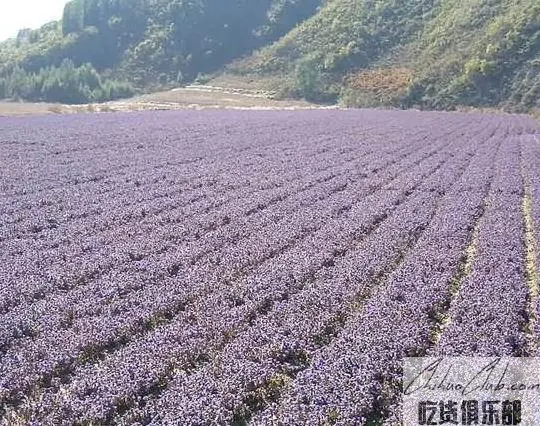
Qingyuan rough gentian
-
Update date::
-
Date of protection::
-
Protected range:The scope of protection of Qingyuan gentian GI products is based on the scope proposed by the People's Government of Qingyuan Manchu Autonomous County of Liaoning Province on the Protection of Qingyuan Longan Geographical Indication Products (Qing Zheng [2008] No. 11), which is now the Qingyuan Manchu Autonomous County of Liaoning Province. Jurisdictional jurisdiction.
-
Related origin:liaoning fushunshi qingyuanmanzuzizhixian qingyuanmanzuzizhixian-aojiabaoxiang qingyuanmanzuzizhixian-beisanjiazhen qingyuanmanzuzizhixian-caoshizhen qingyuanmanzuzizhixian-dagujiazhen qingyuanmanzuzizhixian-dasuhexiang qingyuanmanzuzizhixian-gounaidianxiang qingyuanmanzuzizhixian-hongtoushanzhen qingyuanmanzuzizhixian-nankouqianzhen qingyuanmanzuzizhixian-nanshanchengzhen qingyuanmanzuzizhixian-qingyuanzhen qingyuanmanzuzizhixian-tukouzixiang qingyuanmanzuzizhixian-wandianzizhen qingyuanmanzuzizhixian-xiajiabaozhen qingyuanmanzuzizhixian-yingemenzhen
-
Category:
“Qingyuan gentian” refers to gentian grass produced in Qingyuan Manchu Autonomous County, Liaoning Province. The gentian grass grown in the northeast is also known as the northern gentian. It is a perennial herb with roots and medicine. Its medicinal ingredient is gentian bitter. The gentian grass of Qingyuan Manchu Autonomous County in Liaoning Province is a local specialty medicine with good quality. The content of gentian bitter is 5-9 times higher than that of the Pharmacopoeia. In addition to a large amount of wild growth, artificial cultivation has been started as early as the late 20th century. . By the beginning of the 21st century, more than 3,000 people have mastered more skilled planting techniques. Gentian grass has become a pillar of Qingyuan Chinese herbal medicine cultivation.
Qingyuan gentian quality technical requirements (a) provenance. Gentiana genus Gentiana genus gentian (Gentiana scabra Bunge). (2) Site conditions. Within the protected area, the altitude is 300m to 600m, brown loam or dark brown loam, soil thickness u003e 20cm, pH 5.5 to 6.8, soil organic matter content 3% to 6%. The interval between rotations is more than 5 years. (3) Cultivation techniques. 1. Sowing: (1) Date of planting: from mid-April to early May or November. (2) Seeding method: It is spread by flat hoe, the seeding amount is 7.5 kg/ha to 11.25 kg/ha, covered after sowing, and moisturized with water. 2. Transplanting: (1) Date of transplanting: early April each year. (2) Seedlings for transplanting Planting 7 million seedlings per hectare to 900,000 plants/ha; planting 2 years seedlings 600,000 plants/ha to 750,000 plants/ha. 3. Management: (1) Watering and irrigation: timely watering and irrigation when the weather is dry, to maintain soil moisture. (2) Fertilization: Apply humus organic fertilizer before planting, the application rate is ≥30 tons/ha. 4. Environmental and safety requirements: The use of pesticides, fertilizers, etc. must comply with relevant national regulations and must not pollute the environment. (4) Harvesting and processing. 1. Rhizome harvest: Harvested in the autumn after 3 years of planting. 2. Processing method: Wash the soil and dry it to 12% to 16% in a ventilated and clean place. (5) Quality characteristics. 1. Sensory characteristics: rhizome straight, length 0.5cm to 1cm, diameter 0.3 cm to 1.2cm, deep yellow surface, bowl-shaped stem marks or residual stem base. 20 to 45 elongated roots are placed around the lower and lower ends. The root is cylindrical, slightly twisted, 15 cm to 25 cm long and 1 mm to 3 mm in diameter. The surface is light yellow, the upper part is slightly thicker, the lower part is thinner, with longitudinal wrinkles and root marks. It is brittle, easy to break, flat section, yellow or white in the skin, and the wood is light in color, showing a point-like ring. The skin is looser than the wild species. The gas is slight and the taste is bitter. 2. Physical and chemical indicators: gentiopicroside (C16H20O9) content ≥ 4.5%, total ash ≤ 6%. 3. Safety requirements: Product safety indicators must meet the relevant regulations of the state for similar products.
Apply to:
Producers within the scope of protection of Qingyuan gentian geographical indication products may apply to the Quality and Technical Supervision Bureau of Qingyuan Manchu Autonomous County of Liaoning Province for the use of the \"Special Mark for Geographical Indication Products\", which is approved by the General Administration of Quality Supervision, Inspection and Quarantine.